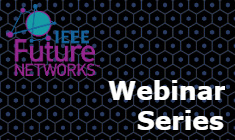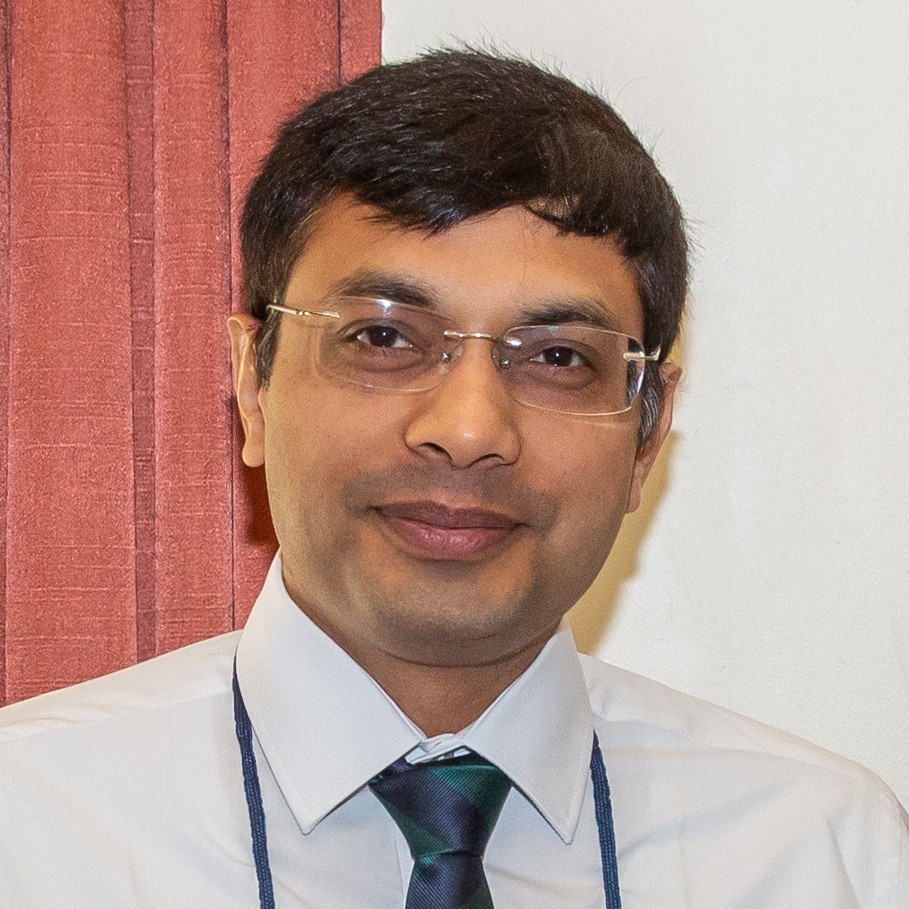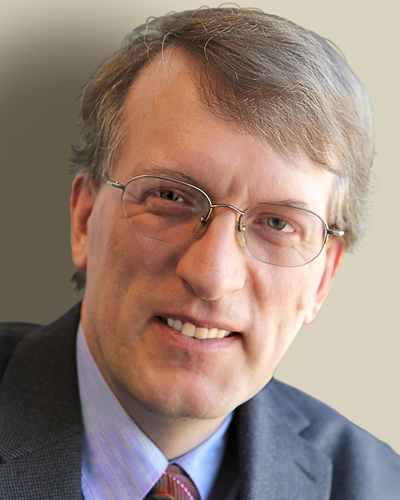Webinar August 2020 Joint MIMO-Radar-MIMO-Communications in the 5G Era
 IEEE Future Networks Webinar:
IEEE Future Networks Webinar:
Joint MIMO-Radar-MIMO-Communications in the 5G Era
Tuesday 25 August 2020 | 11:00am EDT
Presenter
Dr. Kumar Vijay Mishra, National Academies Distinguished Fellow, United States Army Research Laboratory
About the Webinar
The next-generation communications and radar systems envisage a rapid increase in connected devices and users. The resulting dire challenges in utilizing a limited frequency spectrum has led researchers to seek novel solutions in designing both systems to jointly access the spectrum without interfering in each other’s operations and performance. As the wireless community moves closer to finalizing the 5G standard and the advent of radars for high-bandwidth applications such as autonomous driving, physiological sensors, and short-range weather monitoring, the millimeter-wave (mm-Wave) band is the new frontier for spectral coexistence research. The multiple-input multiple-output (MIMO) antenna arrays are critical in enabling the mm-Wave communications and radar. A joint MIMO-radar-MIMO-communications (MRMC) spectrum sharing is considerably more complex with several variables to optimize. At mm-Wave, automotive applications are key drivers of developing MRMC solutions. This talk will introduce the audience to recent advances in MRMC in the context of mm-Wave automotive systems and 5G networks.
.
About the Speaker

Dr. Kumar Vijay Mishra
Dr. Kumar Vijay Mishra obtained a Ph.D. in electrical engineering and M.S. in mathematics from The University of Iowa in 2015, and M.S. in electrical engineering from Colorado State University in 2012, while working on NASA’s Global Precipitation Mission Ground Validation (GPM-GV) weather radars. He received his B. Tech. summa cum laude (Gold Medal, Honors) in electronics and communication engineering from the National Institute of Technology, Hamirpur (NITH), India in 2003. He is currently U. S. National Academies Harry Diamond Distinguished Fellow at the United States Army Research Laboratory (ARL), Adelphi; Technical Adviser to Singapore-based automotive radar start-up Hertzwell; and honorary Research Fellow at SnT - Interdisciplinary Centre for Security, Reliability and Trust, University of Luxembourg. Previously, he had research appointments at Electronics and Radar Development Establishment (LRDE), Defence Research and Development Organisation (DRDO) Bengaluru; IIHR - Hydroscience & Engineering, Iowa City, IA; Mitsubishi Electric Research Labs, Cambridge, MA; Qualcomm, San Jose; and Technion - Israel Institute of Technology. He is the recipient of American Geophysical Union Editors' Citation for Excellence (2019), Royal Meteorological Society Quarterly Journal Editor's Prize (2017), Viterbi Postdoctoral Fellowship (2015, 2016), Lady Davis Postdoctoral Fellowship (2017), DRDO LRDE Scientist of the Year Award (2006), NITH Director’s Gold Medal (2003), and NITH Best Student Award (2003). He has received Best Paper Awards at IEEE MLSP 2019 and IEEE ACES Symposium 2019. His research interests include radar systems, signal processing, remote sensing, and electromagnetics.
On-demand recording coming soon
Click here for the presentation slides
Webinar February 2021 In the era of 5G and 6G, do we still need Wi-Fi?
 IEEE Future Networks Webinar:
IEEE Future Networks Webinar:
In the era of 5G and 6G, do we still need Wi-Fi?
Thursday 4 February 2020 | 11:00am ET
Presenter
Prof. Henning Schulzrinne, Columbia Univsersity
About the Webinar
For more than twenty years, 802.11 or Wi-Fi has been the undisputed champion of enterprise and home networks. Even as fast cellular data networks have become widely available, Wi-Fi still carries the lion's share of data and has relegated other WLAN or short-range wireless standards to niche roles. But the cellular and Wi-Fi worlds have been converging, slowly, at all layers. Both cellular and Wi-Fi now have commonalities at the physical, network, access control (DIAMETER) and application layers (e.g., web and VoIP) and there's strong interest in using 5G systems for some high-end applications. In planning for 6G, what lessons can we learn from this parallel existence and the historical developments of these networks? What are the advantages and disadvantages of such a hypothetical convergence? We argue that the main difference is not radio technology, but rather the implicit understanding about the operational model, in particular authentication and authorization.
.
About the Speaker

Prof. Henning Schulzrinne
Prof. Henning Schulzrinne is Julian Clarence Levi Professor of Computer Science at Columbia University. He received his undergraduate degree in economics and electrical engineering from the Darmstadt University of Technology, Germany, his MSEE degree as a Fulbright scholar from the University of Cincinnati, Ohio and his Ph.D. from the University of Massachusetts in Amherst, Massachusetts. He was a member of technical staff at AT&T Bell Laboratories, Murray Hill and an associate department head at GMD-Fokus (Berlin), before joining the Computer Science and Electrical Engineering departments at Columbia University, New York. From 2004 to 2009, he served as chair of the Department of Computer Science. From 2010 to 2011, he was an Engineering Fellow at the Federal Communications Commission (FCC); he is currently the CTO of the FCC.
He is editor of the "Computer Communications Journal", the "ACM Transactions on Multimedia Computing", the "ComSoc Surveys & Tutorials" and a former editor of the "IEEE Transactions on Image Processing", "Journal of Communications and Networks", "IEEE/ACM Transactions on Networking" and the "IEEE Internet Computing Magazine".
He has been a member of the Board of Governors of the IEEE Communications Society and is vice chair of ACM SIGCOMM, former chair of the IEEE Communications Society Technical Committees on Computer Communications and the Internet and has been technical program chair of Global Internet, IEEE Infocom 2000, ACM NOSSDAV, IEEE IM, IPTComm 2008, IFIP Networking 2009 and IPtel and general co-Chair of ACM Multimedia 2004 and ICNP 2009. He serves on the Internet2 Applications, Middleware and Services Advisory Council and have led a working in the NSF GENI project. He also has been a member of the IAB (Internet Architecture Board). He serves on a number of conference and journal steering committees, including for the IEEE/ACM Transactions on Networking.
He has published more than 250 journal and conference papers, and more than 70 Internet RFCs. Protocols co-developed by him are now Internet standards, used by almost all Internet telephony and multimedia applications. His research interests include Internet multimedia systems, quality of service, and performance evaluation.
He served as Chief Scientist for FirstHand Technologies and Chief Scientific Advisor for Ubiquity Software Corporation. He is a Fellow of the IEEE, has received the New York City Mayor's Award for Excellence in Science and Technology, the VON Pioneer Award, TCCC service award and the IEEE Region 1 William Terry Award for Lifetime Distinguished Service to IEEE.
.
On-demand recording coming soon
Click here for the presentation slides
Webinar February 2022 How 6G is Reshaping the 5G World Forum
 IEEE Future Networks Webinar: How 6G is Reshaping the 5G World Forum
IEEE Future Networks Webinar: How 6G is Reshaping the 5G World Forum
Wednesday 16 February 2022 | 11:00am ET
Presenters
Ashutosh Dutta, Latif Ladid, Benoit Pelletier and Aloizio P. Silva
About the Webinar
The 5G World Forum has only been in existence for four years, but the 2021 edition of this global conference brought together so many exciting and forward-looking presentations that an upgrade and name change is already underway. Tune in to this webinar to hear from four of the expert technologists behind the 5G World Forum, learn about some of the most popular, insightful and provocative content presented at the 2021 event, and hear their predictions and expectations for 2022 when the conference is re-introduced as the Future Networks World Forum.
.
About the Presenters
Ashutosh Dutta is a computer scientist, engineer, academic, author, and an IEEE leader. He is currently a Senior Scientist, 5G Chief Strategist at Johns Hopkins University Applied Physics Lab, JHU/APL Sabbatical Fellow, Adjunct Faculty, and ECE Chair for EP at Johns Hopkins University. He is the Chair of IEEE Industry Connections O-RAN Initiative and Co-Chair for IEEE Future Networks Initiative. An IEEE Fellow, Dutta has co-authored over 150 articles, three book chapters, and had 31 patents awarded. As a computer science expert, he has been affiliated with Internet Real-Time Lab (IRT), and Distributed Computing & Communications (DCC) Laboratory of Columbia University, and works on wireless networking, LTE networks, Software Defined Networking (SDN), computer communication, Network Function Virtualization (NFV), 5G, Network Security, and mobility management.
Latif Ladid currently holds an Emeritus Trustee of the Internet Society, a Board Member of the IPv6 Ready & Enabled Logos Program, and a Board Member of the World Summit Award. He is currently a Senior Researcher with the University of Luxembourg on multiple European Commission Next Generation Technologies IST Projects: 6INITFirst Pioneer IPv6 Research Project, 6WINIT, Euro6IX, Eurov6, NGNi, Project initiator SEINIT, and Project initiator SecurIST. He is also a Board Member of 3GPP PCG, 3GPP2 PCG, Vice Chair, IEEE ComSoc SDNNFV subC, a member of UN Strategy Council, and a member of the Future Internet Forum EU Member States (representing Luxembourg).
Benoit Pelletier is currently Director, Next Gen Ecosystems & Alliances in the Advanced Technologies SEBU at VMware with a Global mandate. Co-founder of the Open Grid Alliance as well as the $400M ENCQOR 5G Public Private Partnership initiative with international collaboration between Canada, USA, Europe and UK, executive member of the board for Innovation ENCQOR, a NPO created to deliver this PPP across Quebec-Ontario corridor. Serving as co-chair of the Next G Alliance Steering Group, on the board of 5G Americas, 6G World Advisory Council, general co-chair of IEEE 5G World Forum and Industry Fora conference. Creative thinker and passionate about collaborative innovation, disruptive technologies, and execution! Proven leader with an intrapreneur mindset who creates rich and unique ecosystems that connect multinational corporations, SMBs, governments and academia.
Aloizio Silva is the CCI xG Testbed Director, helping to speed up advancements in 5G and beyond by providing researchers, government, and industry a destination to try and validate new approaches. In addition, he is research faculty at the Bradley Department of Electrical and Computer Engineering at Virginia Tech University. Silva’s areas of interest include wireless networks, 5G and beyond, mainly in the area of software defined networks (SDN), software defined radio (SDR), network function virtualization (NFV), Internet of Things (IoT), Smart City, and mobile edge computing (MEC).
On-demand recording coming soon
Click here for the presentation slides
Contact IEEE 5G
Sitemap
About
- 5G and IEEE Standards Association (SA)
- 5G and IEEE Technology and Engineering Management Society
- 5G and IEEE Vehicular Technology Society (VTS)
- About
- About IEEE Future Networks
- Brand Development / Marketing Working Group
- Community Development Working Group
- Conferences / Events Working Group
- Education Working Group
- Future Networks and IEEE Intelligent Transportation Systems Society (ITSS)
- IEEE 5G and Instrumentation and Measurement Society
- IEEE 5G and Signal Processing Society
- IEEE 5G Overview
- IEEE Future Networks Initiative Steering Committee
- IEEE Future Networks Technical Community Organization
- In Memoriam: Earl McCune
- Industry Engagement Working Group
- Standards Working Group
- Web Portal / Content Development Working Group
Conferences
- IEEE Future Networking Workshop for 5G and Beyond Testbed and Trials
- 2020 Future Technology Workshop at MWC
- 2021 4th IEEE 5G Workshop on First Responder and Tactical Networks
- 2022 5th IEEE 5G Workshop on First Responder and Tactical Networks
- 2023 6th IEEE 5G Workshop on First Responder and Tactical Networks
- 2nd Future Network Security: Challenges and Opportunities Workshop
- 2nd Systems Optimization Imperatives, Techniques, and Opportunities for Future Networks Workshop
- 2nd Workshop on 5G Technologies for Tactical and First Responder Networks
- 3rd Workshop on 5G Technologies for First Responder and Tactical Networks - About
- 3rd Workshop on 5G Technologies for First Responder and Tactical Networks - Main/Program
- 3rd Workshop on 5G Technologies for First Responder and Tactical Networks - Speaker/Track Details
- 3rd Workshop on 5G Technologies for First Responder and Tactical Networks - Thank You
- 5G Demystified
- 5G Technology Workshop during Mobile World Congress in Barcelona
- Advanced Solutions for 6G Satellite Systems
- Call for Hosting FNWF 2024
- Conferences
- Cooperative and Automated Driving Workshop and Industry Panel 2019
- Edge Cloud Workshop
- Forging a Sustainable Path to 6G
- Future Network Artificial Intelligence and Machine Learning Workshop
- Future Network Security: Challenges & Opportunities Workshop
- Future Networks 1st Massive MIMO Workshop
- Future Networks 2nd Massive MIMO Workshop
- Future Networks Testbed Requirements, Challenges and Opportunities
- IEEE 5G and Beyond Testbed Workshop
- IEEE 5G and Beyond Testbed Workshop - Porto
- IEEE 5G Roadmap Workshop at ICC 2017
- IEEE 5G Roadmap Workshop at ICC 2018
- IEEE Public Safety Technology Initiative Workshop
- Past Events
- System Optimization for the 5G Era Workshop
- Systems Optimization Imperatives, Techniques, and Opportunities for Future Networks Workshop
- The Future Of Hyper-Connected Beyond 5G Networks at 6G Wireless Summit 2020
- Workshop on Challenges to Extending Traveling Edge to Sea, Sky, and Space
Edison NJ Tutorial
- 5G IoT Network - Service Oriented Communications with Global Reachability
- Critical Issues of IoT Empowered by 5G - A Case Study on Self-Driving Vehicles
- Friend of Foe? Security Issues in IoT Devices Empowered by 5G Networks
- IEEE 5G Learning Series - NJ Edition - Track 1
- IEEE 5G Learning Series - NJ Edition Content
- Importance of mmWave in 5G
- Newer Low Code Back Office Capabilities for 5G, How a New BSS Can Enable 5G Innovations
- Prospect of 5G Air Interface
- Silicon Integration and Packaging - the Hardware Pillars of mmWave 5G Communication
Education
- 2019 Summer Session for Young Professionals
- 2020 IEEE Future Networks Winter Session
- 5G - A Door Opener to 6G?
- 5G - A Door Opener to 6G? Recording and Slides
- 5G - A Door Opener to 6G? Recording and Survey
- 5G and GDPR – Just Because You Can Capture Data Does Not Mean You Can Use It
- 5G and Satellite Spectrum and Standards
- 5G and Satellite Spectrum and Standards Recording and Slides
- 5g Cellular: It Will Work!
- 5G Drives Major Paradigm Shifts for Power
- 5G mmWave Revolution and New Radio
- 5G mmWave Revolution and New Radio Recording
- 5G Networks for Rural and Remote Areas Applications
- 5G Spectrum Sharing: A Network Economics View
- 5G Technology Is Fantastic, But Can We Afford It?
- 5G Technology Is Fantastic, But Can We Afford It? Slides and Recording
- 5G: More Capability. More Complexity
- Education
- Education Working Draft
- Education Working Draft (2)
- FNTC Distinguished Lecturer Program
- Future Networks Webinars
- IEEE 5G Additional Materials
- IEEE 5G e-Learning
- IEEE 5G Learning Series
- IEEE 5G Learning Series - Bangalore 2nd Edition
- IEEE 5G Learning Series - Bangalore Edition
- IEEE 5G Learning Series - Bay Area: Energy Efficiency Edition
- IEEE 5G Learning Series - New Jersey Edition
- IEEE 5G Learning Series - Trento Edition
- IEEE 5G Summer School
- IEEE 5G Tutorials
- IEEE 5G Webinar Series
- IEEE Future Networks Tutorial - 5G/6G 2023 Now & in the Future Edition
- IEEE Future Networks Tutorial - Denmark Edition
- IEEE Future Networks Tutorial - Kuala Lumpur Edition
- International Network Generations Roadmap Webinar January 2020
- Leading the World to 5G and its Expansion to New Industries
- Leading the World to 5G and its Expansion to New Industries Recording and Slides
- Leading the World to 5G and its Expansion to New Industries Recording and Survey
- Massive MIMO for 5G below 6 GHz
- Mitigating Thermal & Power Limitations to Enable 5G
- Mitigating Thermal & Power Limitations to Enable 5G Recording and Slides
- Mitigating Thermal & Power Limitations to Enable 5G Recording and Survey
- mmWaves in 5G NR Cellular Networks: a System Level Perspective
- mmWaves in 5G NR Cellular Networks: a System Level Perspective Recording and Survey
- mmWaves in 5G NR Cellular Networks: a System Level Perspective Slides and Recording
- Networked Electricity
- Networked Electricity Recording and Slides
- Networked Electricity Recording and Survey
- NSF Platforms for Advanced Wireless Research
- Security in SDN/NFV and 5G Networks – Opportunities and Challenges
- Security in SDN/NFV and 5G Networks – Opportunities and Challenges Recording and Slides
- Security in SDN/NFV and 5G Networks – Opportunities and Challenges Recording and Survey
- Silicon Technologies for mmWave 5G Enhanced Mobile Broadband Radio Interface
- Small Cells and Their Role in Future 5G Networks
- Summer School for Young Professionals 2018
- The Future of IoT
- Two-day Winter School on 5G Communications
- Virtualization and Softwarization in 5G Systems
- Webinar 31 August 2022 INGR Webinar Series: Future In-Building Networks
- Webinar April 2020 Trust Management in Edge Clouds with SCONE
- Webinar Call for Instructors
- Webinar January 2022 Transdisciplinary Framework for 5G-Enabled Applications and Services in the New Reality
- Webinar January 2023 FNI Webinar Series: Micro/Nano Systems and Technologies as Enablers of 6G, Super-IoT and Future Networks
- Webinar June 2020 Realizing 5G Futures and Enablers Using ENCQOR 5G Testbed
- Webinar June 2022 The Road to 6G: INGR Mapping Future Networks into 2032
- Webinar March 2020 Cell-Free Architectures with Radio Stripes
- Webinar March 2022 Open RAN Challenges and Opportunities for Future Wireless Networks
- Webinar May 2020 Evolution of Optical and Transport Technologies for 5G Crosshaul Networks
- Webinar May 2022 Systems Optimization for Future Networks
- Webinar September 2022 FNI Webinar Series: IEEE Connecting the Unconnected Challenge Panel
- Webinars - Call For Instructors
- Winning the DARPA Spectrum Collaboration Challenge
- Winter School for Young Professionals 2019
Home
- Contact IEEE 5G
- Sign In
- Sitemap
- Webinar August 2020 Joint MIMO-Radar-MIMO-Communications in the 5G Era
- Webinar February 2021 In the era of 5G and 6G, do we still need Wi-Fi?
- Webinar February 2022 How 6G is Reshaping the 5G World Forum
IEEE Future Directions Talks Future Networks
- IEEE Future Directions Talks 5G: David Witkowski Bridging the 4G/5G Gap
- IEEE Future Directions Talks 5G: Kaniz Mahdi - Part 1 of 2
- IEEE Future Directions Talks 5G: Kaniz Mahdi - Part 2 of 2
- IEEE Future Directions Talks 5G: Thyaga Nandagopal
- IEEE Talks 5G: Alex Wyglinski
- IEEE Talks 5G: An interview with the co-leaders of the IEEE 5G Initiative
- IEEE Talks 5G: Ivan Seskar
- IEEE Talks 5G: James Irvine
- IEEE Talks 5G: Three Questions for Ashutosh Dutta
- IEEE Talks 5G: Three Questions for Gerhard Fettweis
Member Content
- INGR Edition 1 Download
- International Network Generations Roadmap (INGR) - 2021 Edition
- International Network Generations Roadmap (INGR) - 2022 Edition
- International Network Generations Roadmap (INGR) - 2023 Edition
Podcasts
- 5G Connectivity Beyond the City – Agricultural use cases through 5G RuralFirst
- 5G Deployment Challenge: Part1
- 5G for large-scale wireless communications between autonomous vehicles
- 5G: Let’s not Wait for the Killer App
- 6 GHz Spectrum and the Future of 5G Connectivity -- Part 1: The Changing Spectrum Landscape
- Do We Still Need the FCC? Darpa's Spectrum Collaboration Challenge
- Edge Services Part 2: Edge Platforms and Services Evolving into 2030
- IEEE Future Networks Podcasts with the Experts
- Is it Time to Change how we Think about Telecommunications Generations?
- Massive MIMO’s Path Ahead: Sky High Scalability, Intelligent Control, and AI/ML
- Security Part I: Foundational Security Capabilities
- The 5G Deployment Challenge - Part 3 in a Series
- The 5G Deployment Challenge - Part 4 in a Series
- The 5G Deployment Challenge: Part 2
- The 5G Energy Gap - A Fatal Flaw for 5G Deployment
- The Edge Ecosystem From Now Through 2030
- The Future of Mobile Beyond 5G: Part 1
- The Future of Mobile Beyond 5G: Part 2
- The International Network Generations Roadmap - Executive Overview
- The Main Transformative Aspects of 5G
- What Challenges Do You Foresee that Could Affect Deployment of 5G
- What is your boldest vision of what 5G can bring us?
Publications
- 6G Activities in Germany
- 7 Experts Cast Their Visions for 5G and Beyond in 2021
- 7 Experts Forecast What's Coming for 5G in 2020
- A Delay Modeling Framework for Embedded Virtual Network Function Chains in 5G Networks
- Art of the Possible in 6G – A View from 6GIC
- Contribute
- Disruptive Models for Telecom Operators in a New Digital Ecosystem
- Foundational Security Capabilities
- Future Networks Videos
- IEEE Future Directions Talks Future Networks
- IEEE International Network Generations Roadmap (INGR)
- Indoor Coverage - The Key to Delivering 5G
- Industry
- On Consideration of the RAN Slicing - From the Operator's Perspective
- Secure RF/FSO Communications Towards the 6G Era
- Ten Experts “Get Real” With 5G in 2022
- The Levels of Intelligence of Mobile Networks and Consideration of Architecture Evolution
Roadmap Project Documents
Tech Focus
- 5G Communications Systems and Radiofrequency Exposure Limits
- 5G Wireless Modules Enabled by Additive Manufacturing Technologies
- Airborne Free-Space Optical Communications for Fronthaul/Backhaul Networks of 5G and Beyond
- An Overview of 3D Printed Antennas for 5G Communications and Beyond
- Catalog of Articles
- Connectivity for Air Mobility Transportation in Future Networks
- CSAI: Open-Source Cellular Radio Access Network Security Analysis Instrument
- Delivering on 5G’s Foundational Control Requirements
- How does SVC enable Distributed Caching in MEC?
- IEEE 5G Tech Focus - March 2017
- IEEE Tech Focus - April 2021
- IEEE Tech Focus - April 2022
- IEEE Tech Focus - December 2017
- IEEE Tech Focus - December 2018
- IEEE Tech Focus - December 2022
- IEEE Tech Focus - June 2017
- IEEE Tech Focus - June 2023
- IEEE Tech Focus - June 2023
- IEEE Tech Focus - March 2018
- IEEE Tech Focus - March 2019
- IEEE Tech Focus - May 2018
- IEEE Tech Focus - November 2019
- IEEE Tech Focus - November 2020
- IEEE Tech Focus - October 2021
- IEEE Tech Focus - September 2017
- IEEE Tech Focus - September 2019
- Millimeter-Wave 3D-Printed Antenna Concepts for 5G Backhaul Links
- Millimeter-wave Metantenna Technologies in 5G and Beyond
- New network architectures will be weakly coupled
- Optical Transport for 5G Mobile Network: Challenges and Solutions
- Other Future Networks Publications
- Progress and Challenges in the Cellular Industry and 5G
- Quantum-inspired Processing for System Optimization in Emerging Networks
- Radio Propagation Modelling for Smart Environments in 5G/6G Networks
- Rethinking of Optical Transport Network Design for 5G/6G Mobile Communication
- Rural Neutral Host Network Demonstration in Orkney, Scotland
Topics
- 5G antenna systems and the IEEE 5G conference
- 5G Hardware Components: Advancements and Future Trends
- 5G Satellite Spectrum
- 5G Testbed
- Additional research areas in 5G technology
- Battery life and energy storage for 5G equipment
- Call to Action: Get Involved in Your Local BroadbandUSA Efforts
- Charting an integrated future: IoT and 5G research papers
- Massive MIMO
- New developments and applications in 5G technologies
- Research areas in 5G Technology
- Topics
- Wave spectrum challenges with 5G
- What you should know about the 5G Broadband Conference
Sign In
Please join the IEEE Future Networks Community to access this material.
Click the button below to sign in with your IEEE account.

